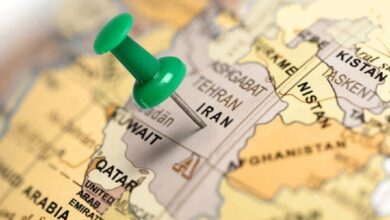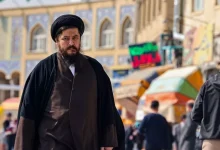
Iran stands at a defining moment in its contemporary history—a moment so critical that every decision, every movement, and even every pause carries the potential to irreversibly alter the nation’s trajectory. The regime that has labeled itself the “Islamic Republic” was, from its inception, not founded upon republicanism but rather on an ideological, centralized, and unaccountable configuration of power. In this framework, the people have been absent—not only in practice but even in the political imagination that governs it.
The very essence of republicanism—the notion that sovereignty resides with the people—has in this system been reduced to an empty slogan, a ceremonial veil shrouding a supra-legal authority. Institutions such as the Guardian Council, the Assembly of Experts, and the Supreme Leader himself are all pillars of a mechanism that curtails electoral processes, extinguishes dissent, and reduces public participation to orchestrated rituals of voting devoid of consequence.
Today, on the cusp of Ayatollah Ali Khamenei’s departure, the system faces one of the gravest crises of legitimacy and internal cohesion in its existence. The succession crisis is not merely the selection of an individual—it is a mirror reflecting deep structural fissures within the regime’s core: entrenched rivalries among military elites, security factions, clerical power centers, and economic oligarchs, each vying to preserve or expand its dominion in the post-Khamenei order.
Within this tense landscape, figures such as Mojtaba Khamenei, Sadeq Larijani, Hassan Khomeini, Ahmad Khatami, and even intelligence operatives like Hossein Taeb or Ali Shamkhani are being speculated upon in state-run media and international circles as potential heirs to the leadership. Yet the fundamental reality remains: none of these names emerges from the public’s will, nor is the process surrounding them conducted with even a semblance of transparency or public legitimacy.
The deliberations determining the country’s future leadership are unfolding behind heavily guarded doors, under the cloak of national security, and in total exclusion of the public. This is not merely undemocratic—it is a glaring testament to the regime’s deeply concealed, hierarchical, and authoritarian nature, one that systematically denies the people’s agency.
This leadership vacuum is evolving within a broader context of growing societal unrest, pervasive public mistrust, collapsing social capital, and an ever-tightening regime of repression. The waves of protest in recent years—from the Green Movement in 2009 to the uprisings of 2017, 2019, and 2022—speak volumes of the chasm that now separates the state from its citizens. A nation that has repeatedly proclaimed “We do not want the Islamic Republic” is, yet again, witnessing its future shaped in its absence.
This crisis is not confined to the domestic sphere. The rivalries over succession within the Supreme Leader’s court carry seismic regional implications. From Iran’s involvement in Yemen, Syria, and Lebanon to its strained ties with the United States, Israel, and neighboring Arab states, the identity of the next leader could profoundly alter the geopolitical architecture of the Middle East.
At this historical crossroads, the absence of autonomous civil institutions, independent media, legitimate political parties, and authentic electoral mechanisms has transformed Iran’s political arena into a treacherous landscape, rigged with peril. Every decision emanating from the regime’s power structure risks triggering new waves of protest, civil disobedience, or widespread instability. A society long disillusioned by promises of revolution and reform is now seeking to redefine its relationship with power—not from within the system, but in direct confrontation with it.
After forty-five years, the Islamic Republic is approaching what may be its final reckoning with legitimacy. But can a regime built on exclusion, suppression, and absolute dominion over every facet of public life truly reform itself? Or is it—as all signs increasingly suggest—being consumed by a maelstrom born of decades of repression, corruption, monopolization, and mistrust?
When the mask of “republic” finally falls, a bitter truth will be laid bare:
This was never a republic.







